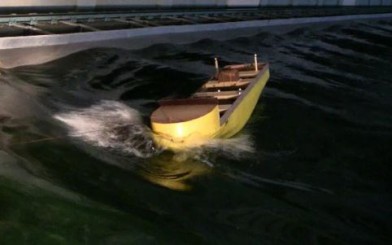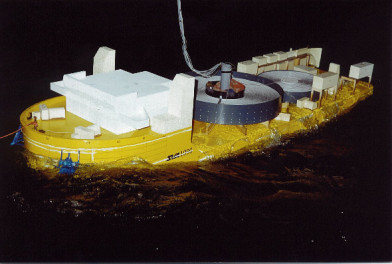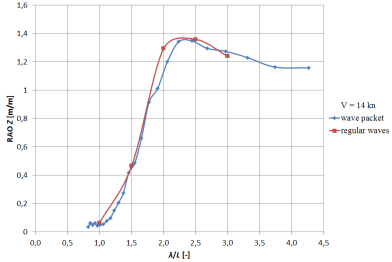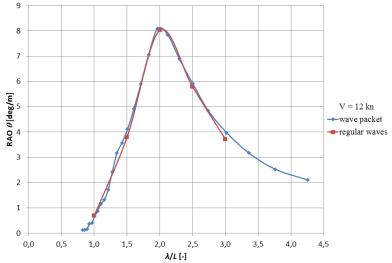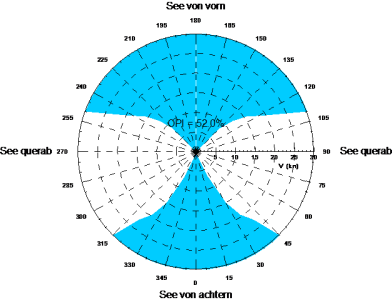Seakeeping tests can be carried out in countering and following seas as well as quartering seas at an angle of up to 35° off course. The latter takes the form of zigzag driving, which is recognised by the classification societies as an experimental technique. The motion behaviour of tested objects is detected with a high resolution optical tracking system. This system allows contactless measurement of the coupled motions of two-body systems in all 6 degrees of freedom as well as speed and acceleration at defined positions.
For numerical simulations of sea keeping the UTHLANDE program system is available. Based on linear and non-linear strip method, this system allows the calculation of the motions and loads of mono hull ships and catamarans for all 6 degrees of freedom. The program provides the statistical characteristics (short and long term statistics) for long and short crested seas represented in Cartesian or polar diagrams and a video animation based on a “ship motion viewer”. The process provides valuable insights by varying different sea state specific parameters in the optimisation process and serves as a valuable support of model experiments.
Context Related References / Research Projects
[1] Fröhlich, M.: Experimentelle und rechnerische Analyse von Slammingbelastungen im Seegang, Ermittlung von Koeffizienten zur Abschätzung von Slammingbelastungen, SVA-Potsdam, 16.02.2000
[2] Fröhlich, M.: Ermittlung der Wasserübernahme bei Schiffen im Seegang mit Hilfe der Anwendung moderner Ultraschalltechnik, 1. SVA-Forschungsforum, Potsdam, 31. Januar 2008
[3] Fröhlich, M.: Wasserübernahme und parametererregte Rollschwingungen bei Schiffen im Seegang, Mitgliederversammlung, Verein zur Förderung der SVA e.V., 18. Dezember 2008
